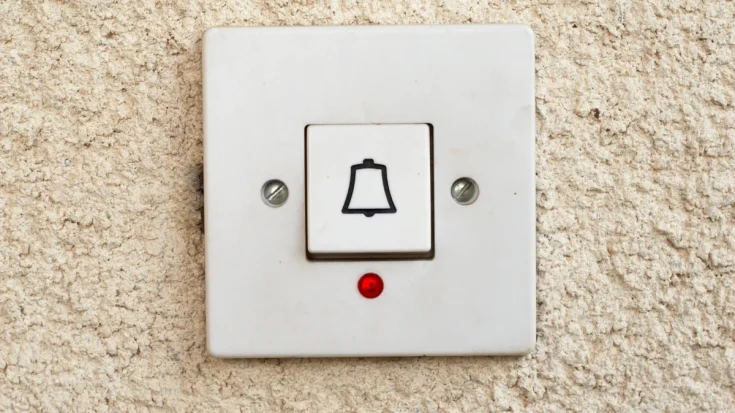A doorbell is an electronic device that supports household needs as a signaling guest or couriers in front of your house. Not only as a sign, the device is currently also developing as a home security and comfort system.
This article will provide in-depth information related to devices, starting from the definition, how doorbells work, functions, types that are divided into two categories, to regulations for their use in Indonesia.
Table of Contents
What is a Doorbell?

Doorbells are electronic devices that function to provide information indoors that someone is at the door. This device can be used on fences, doors, houses, or in bedrooms.
Also Read
Two main components make up this device, namely the button placed near the entrance and the receiver unit (chime).
The initial concept of the device that has long been used is a simple mechanical or electrical wiring system. However, along with technological developments, the device now comes in a variety of more sophisticated versions using radio waves, internet connections, to some using cameras.
How Doorbell Works
How a doorbell works is very simple, with a button component placed near the entrance and a receiving unit (chime) that sounds in the room when the button is pressed.
The electrical circuit closes when the device button is pressed, which causes an electric current to flow through the solenoid (a coil of wire with an iron core). The magnetic field generated by the solenoid attracts the iron rod, which then produces a “ding-dong” or other sound.
The Functions of Doorbell
Doorbells primarily function as a means of calling home residents. But this appliance also has various additional functions to support the comfort of your home. Here are some of the main functions of the device:
- Signaling: The main function of this appliance is, of course, to signal that there are guests outside the room.
- Facilitates communication: Signaling that there is a guest outside is a communication in itself, but in a smart doorbell, this device is equipped with a microphone and speaker to increase the ease of communication between people outside and inside the room.
- Supports security system: In modern types, your security system can be increased because the device is equipped with cameras and motion sensors.
The Types of Doorbell

Doorbell is divided into two types, namely conventional type and smart type. The following is an explanation of the two types:
Conventional doorbell
Although called conventional, this type of doorbell that is often encountered usually uses a wireless system. This device is connected via radio signal from a button installed outside the room to a sound receiver unit inside the room.
Most conventional types use Short Range Devices (SRD) technology that works at a frequency of 433 MHz, which is classified as a low frequency.
The advantages of this type of device lie in its more practical simplicity, energy saving without the need for an internet connection, easy installation without the need for complicated configurations, and the signal is stable enough for household needs.
Smart doorbell
Smart doorbells work by using WiFi connectivity. It is also usually coupled with a mobile app to provide notifications directly to the device.
The devices are equipped with many features, including cameras, motion detection, two-way communication, cloud storage for video recordings, and integration with smart home systems.
Doorbell Regulations in Indonesia

The doorbell uses communication technologies such as Short Range Devices (SRD) for conventional type or WiFi for smart type that operate within a specific frequency spectrum. In Indonesia, any SRD or WiFi-based wireless device is required to have a DJID (Directorate General of Digital Infrastructure) under the Ministry of Communication and Digital (KOMDIGI).
Doorbell regulation is based on KEPMEN No. 260 Tahun 2024 for SRD and KEPMEN No. 12 Tahun 2025 for WiFi, which requires all radio frequency-based devices to meet specific technical standards before being sold in the country.
The DJID certification ensures that the product meets government safety and quality regulations and does not interfere with other communication devices. The certification process involves technical testing, such as frequency adjustments, safety checks, and compatibility with the surrounding environment.
Once the tests are completed, products that pass are listed in a Test Result Report, which confirms that the product is safe and ready for sale in Indonesia. This report reassures customers that the product meets technical standards and is secure.
For companies wanting to sell a doorbell in Indonesia, Type Approval Certification Services for ICT Products are available to assist with this process. This service includes preparing technical and legal documents, conducting required testing, ensuring compliance with regulations, helping companies streamline the certification process, and giving consumers confidence in certified products. -UN.











